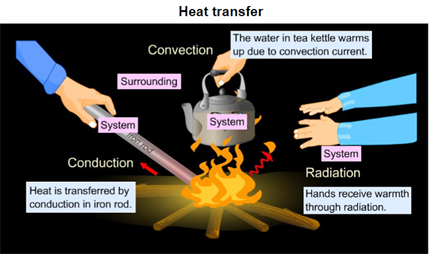PDF chapter test TRY NOW
Convection takes place when heat transfer happens in a liquid or gas medium.
Let's do an activity to understand this process.
Step 1. Take a steel vessel.
Step 2. Fill the vessel with water.
Step 3. Keep the vessel on the stove and heat it.
Now, what do you observe? Once the water heated up, small bubbles start trickling up in the water. Do you know why these bubbles are coming up?
The bubbles come due to the presence of air in the water. When the heat energy passes to the vessel, the vessel absorbs it and transfers that heat energy to the water (liquid). This transferred heat energy will heat the water molecules.
We know that the molecules in the matter are continuously moving. When heat energy passes through water molecules, the molecules absorb and pass it to the other neighbouring molecules until every molecule gets the heat energy.
So we can use this mode of transfer of the heat energy at liquid or gas medium as a convention.
Therefore, first, the conduction reaction (heat transfers to vessels) takes place, leading to the convection reaction.
Example:
1. While boiling water, convection occurs.
2. Air conditioners and refrigerators work based on this principle of convection.
3. Melting of ice cubes.
4. We feel the hot air or wind on the road during summer. It is because of the convection process.

Fig. - Modes of heat transfer
